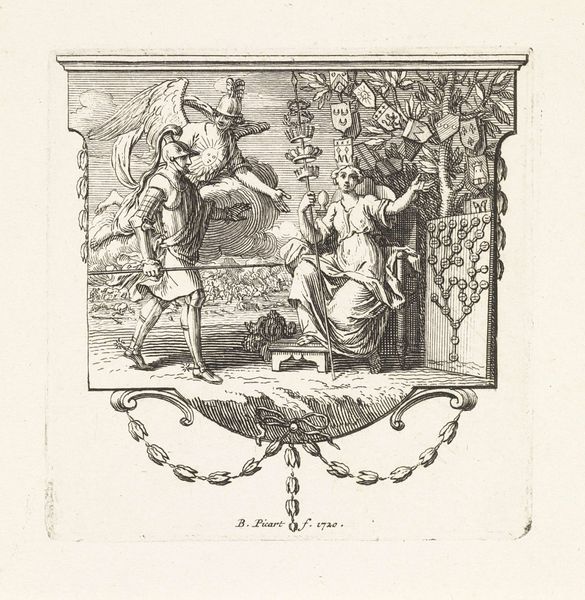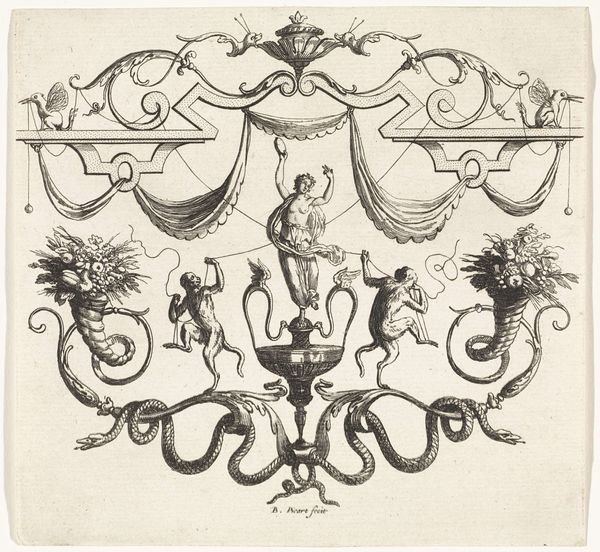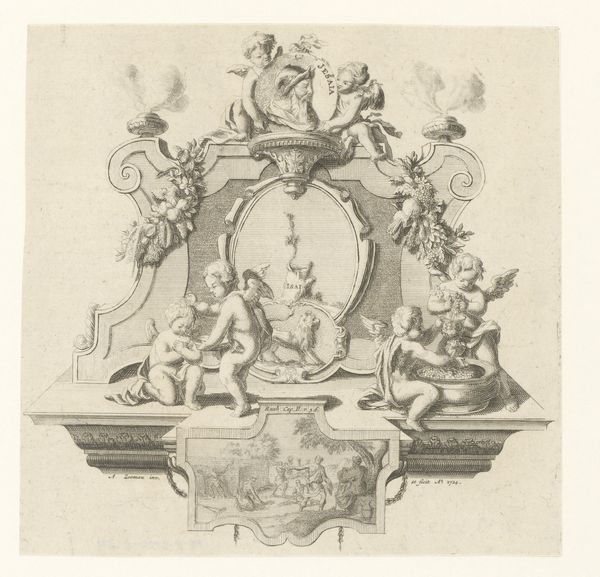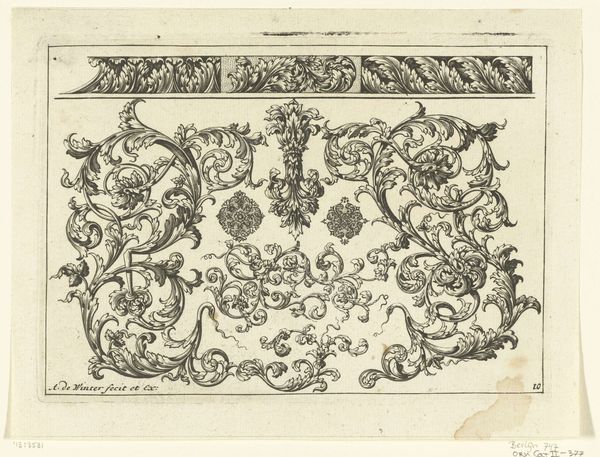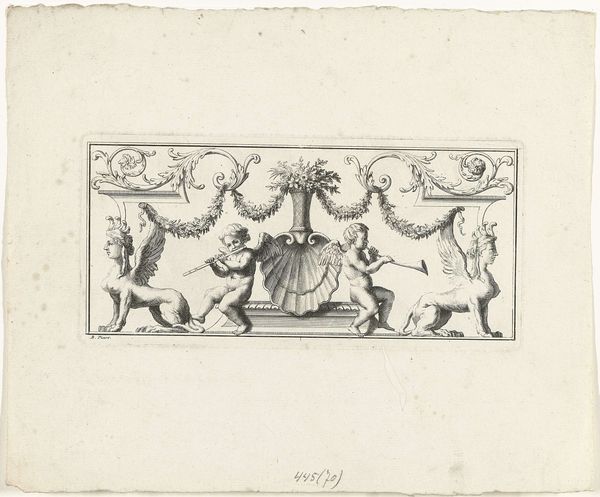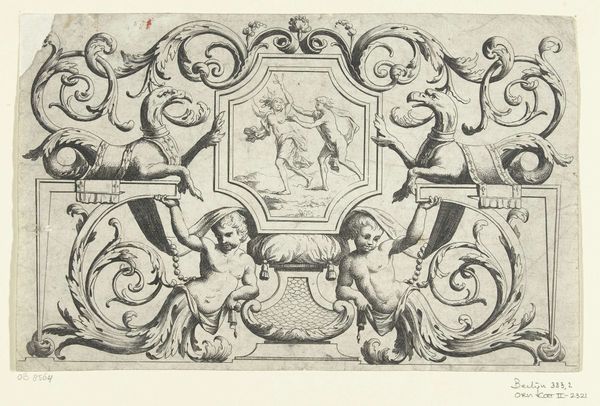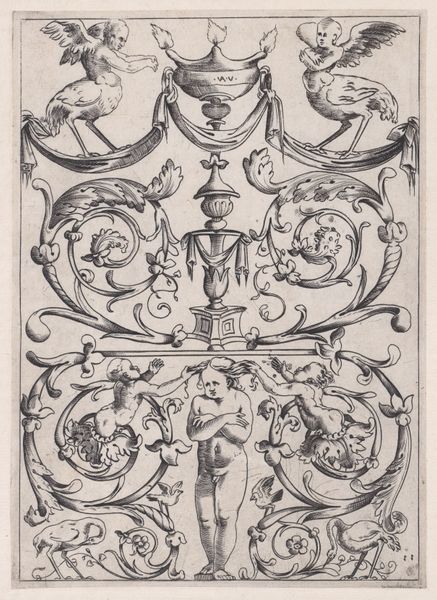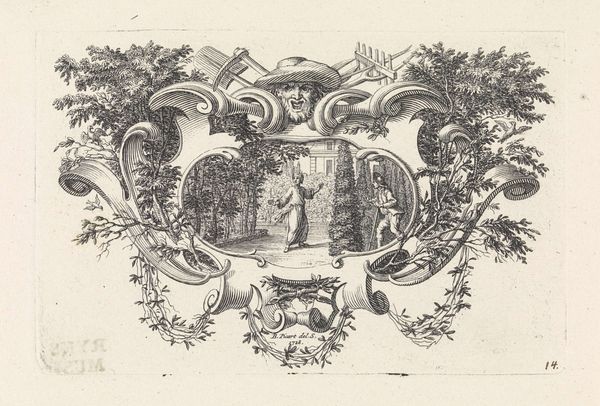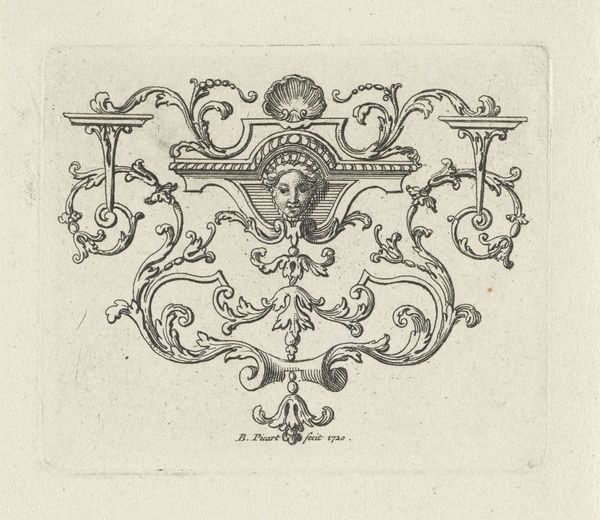
print, engraving
#
baroque
# print
#
pen illustration
#
old engraving style
#
figuration
#
pen-ink sketch
#
pen work
#
sketchbook drawing
#
history-painting
#
decorative-art
#
engraving
Dimensions: height mm, width mm
Copyright: Rijks Museum: Open Domain
Editor: So this is "Vignet met saters en sfinxen," a 1725 engraving by Bernard Picart, housed in the Rijksmuseum. I find the combination of mythological creatures and ornate design elements so intriguing and whimsical, a flight of fancy. What draws your eye when you look at this piece? Curator: Well, immediately I'm struck by the symbolic weight these figures carry. Sphins, for instance, traditionally represent guardianship, mystery, and wisdom. Their presence anchors this seemingly decorative vignette in a deeper well of cultural memory, dating back to ancient Egypt and Greece. What do you make of the satyrs? Editor: I see them more as playful, even mischievous figures, contrasting with the rather stoic sphinxes. Is it meant to create tension? Curator: Precisely. Satyrs are associated with revelry, the wildness of nature, and a connection to the animalistic side of humanity. Picart is playing with duality here. Think of the vessel being held aloft - it represents offerings, aspirations towards refinement, and perhaps hints at the tension between earthly pleasures and higher pursuits. Notice how they're all carefully posed in relation to each other and in this artificial, designed, space. It reminds me of putting nature inside a cage, how would that relate to the Baroque and decorative art styles? Editor: That makes me rethink the whole piece! It's not just a pretty design; it’s a visual representation of humanity trying to tame or frame something that could potentially be untameable, from our human psyche and desires to real and symbolic historical connections. Curator: And within that tension, there lies the power of enduring symbols to resonate across centuries, constantly reshaped by new interpretations, and inviting contemplation about cultural heritage. Editor: It is interesting how decorative arts can also reflect profound philosophical ideas, using imagery and symbolism in such creative ways.
Comments
No comments
Be the first to comment and join the conversation on the ultimate creative platform.
